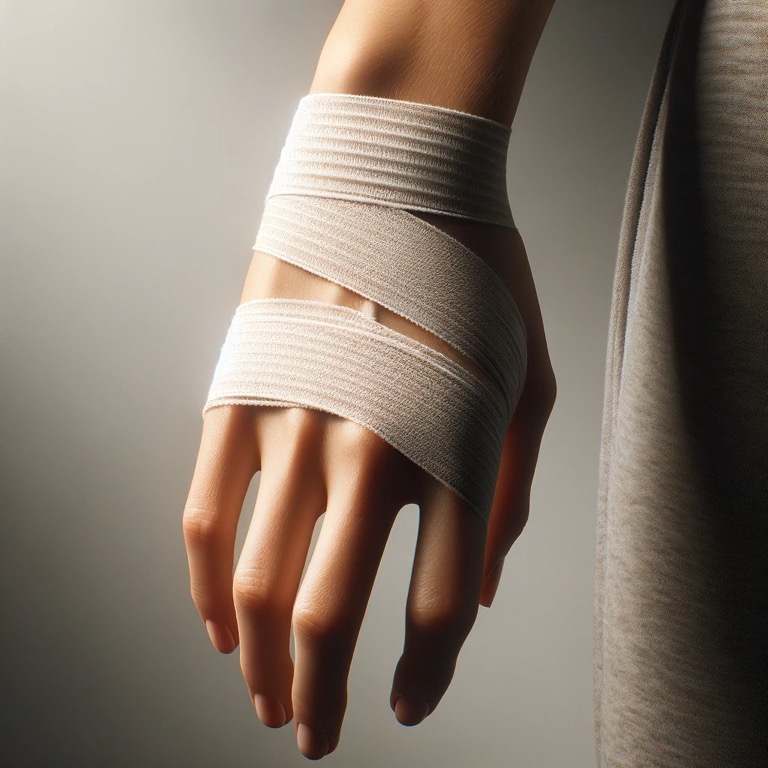Wrist Injury Claims in Texas: Comprehensive Legal Guide
January 12, 2024

- Key Takeaways
- Seeking Medical Attention for Your Wrist Injury
- Hiring a Personal Injury Lawyer for Your Wrist Injury Claim
- Opening a Claim with the Insurance Company for Your Wrist Injury
- Investigating the Claim and Obtaining Medical Records for Your Wrist Injury Case
- Negotiating a Settlement for Your Wrist Injury
- Filing a Lawsuit and Disbursing Funds for Your Wrist Injury Claim
Filing a personal injury claim for a wrist injury can be a daunting task, especially if you’re unfamiliar with the legal process. In Texas, seeking compensation for a wrist injury requires a deep understanding of the personal injury claims process and navigating through various stages. From seeking immediate medical attention to hiring a personal injury lawyer, opening a claim with the insurance company, and potentially filing a lawsuit, there are crucial steps to take to increase your chances of obtaining the compensation you deserve.
Key Takeaways
- Understanding the personal injury claims process in Texas is crucial when seeking compensation for a wrist injury.
- Seeking immediate medical attention and documenting your injuries are essential for your health and your personal injury claim.
- Hiring a personal injury lawyer can greatly assist you in assessing your case, negotiating with insurance companies, and maximizing your compensation.
- Opening a claim with the insurance company involves sending a Letter of Representation (LOR) from your attorney to the defendant and their insurance company.
- Investigating the claim, obtaining medical records, and gathering evidence are essential steps in building a strong wrist injury case.
Seeking Medical Attention for Your Wrist Injury

When it comes to a wrist injury, seeking immediate medical attention is crucial for both your health and your personal injury claim. Even if your injury seems minor, it’s important to get checked by a medical professional as some injuries may not be immediately visible. Remember, documenting your injuries is essential for providing evidence during the claims process.
Seek Medical Attention for Your Wrist Injury
First and foremost, prioritize your health and well-being. Seeking medical attention promptly can help prevent further complications and ensure proper treatment. It’s always better to be safe than sorry, even if you believe your injury is minor.
Document Your Wrist Injury
Documenting your injuries is also highly recommended. Whether it’s through written descriptions or photos, having a clear record of your injuries can significantly strengthen your claim. A picture, as they say, is worth a thousand words, especially when it comes to providing visual evidence of the extent of your wrist injury.
| Why is Documenting Injuries Important? |
|---|
| 1. Provides evidence for your personal injury claim. |
| 2. Helps demonstrate the severity of your wrist injury. |
| 3. Supports your claim for compensation. |
| 4. Helps establish a clear timeline of events. |
Hiring a Personal Injury Lawyer for Your Wrist Injury Claim
If you’ve sustained a significant wrist injury and are facing high medical bills, it is highly advisable to hire a personal injury lawyer. A skilled lawyer will provide you with the guidance and legal representation you need to navigate through the complexities of your case.
Here are some of the benefits of hiring a Texas personal injury lawyer to handle your wrist injury claim:
- Professional Assessment: A personal injury lawyer will evaluate the details of your wrist injury claim and determine its potential value. They will consider factors such as medical expenses, lost wages, pain and suffering, and future medical needs.
- Negotiation Skills: A skilled attorney will negotiate with insurance companies on your behalf, working to secure a fair settlement that reflects the full extent of your injuries and damages.
- Advocate: By hiring a personal injury lawyer, you gain legal representation throughout the entire claims process. This ensures that your rights are protected, and your interests are advocated for at all times.
Don’t underestimate the importance of hiring a personal injury lawyer to handle your wrist injury claim. Their expertise in the field of personal injury law, negotiation skills, and courtroom experience will greatly increase your chances of obtaining the compensation you deserve.
Next, we’ll explore the process of opening a claim with the insurance company for your wrist injury. This step is essential in pursuing your personal injury claim and seeking the compensation you’re entitled to.
Opening a Claim with the Insurance Company for Your Wrist Injury

When it comes to seeking compensation for your wrist injury in Texas, the first step is to open a claim with the insurance company of the at-fault party. This process initiates the personal injury claim process and sets the stage for negotiations and potential settlement.
To start the claim, your injury attorney will send a Letter of Representation (LOR) to the defendant and their insurance company. This letter notifies them of your intent to file a personal injury claim and establishes your legal representation in the matter.
The Letter of Representation (LOR) serves multiple purposes:
- It informs the insurance company that you have legal representation and ensures that all communication related to the claim goes through your attorney.
- It establishes guidelines for the communication process, ensuring that all parties involved respect the rules and conduct themselves professionally.
- It clearly states your intent to seek compensation for your wrist injury, emphasizing the seriousness of the matter.
By opening a claim with the insurance company through the Letter of Representation, you set the stage for the next steps in the personal injury claim process. This includes gathering evidence, conducting investigations, and negotiating a fair settlement that covers your medical expenses, lost wages, and other damages resulting from your wrist injury.
Investigating the Claim and Obtaining Medical Records for Your Wrist Injury Case

After hiring an injury lawyer, the law firm will conduct a thorough investigation into your wrist injury claim. This investigative process is crucial for building a strong case and obtaining the compensation you deserve.
The claim investigation involves multiple steps, such as gathering evidence, interviewing witnesses, collecting crash or incident reports, and reviewing your medical records. These actions help establish the cause of the wrist injury, assess its extent, and determine liability.
During the investigation, it’s important to provide your lawyer with all relevant information regarding the incident and your injuries. This includes any documentation, photographs, or witness statements that can support your claim. By cooperating fully with your lawyer, you can ensure that no crucial details are overlooked.
Medical Records of Your Wrist Injury
One important aspect of the investigation is obtaining your medical records. These records provide essential evidence of the extent and nature of your wrist injury. They can help establish the need for medical treatment, demonstrate the impact of the injury on your daily life and activities, and support your claim for compensation.
Medical records can include doctor’s notes, test results, treatment plans, and invoices for medical expenses. Your lawyer will work with you to gather these records from the relevant healthcare providers. The information contained in your medical records will be crucial in determining the value of your claim and negotiating a fair settlement.
Crash Report
In addition to medical records, crash or incident reports are also important pieces of evidence that may be obtained during the investigation. These reports provide detailed information about the circumstances surrounding the incident, such as the location, time, and parties involved. They can help establish the cause of the accident and demonstrate the negligence or fault of the responsible party.
By conducting a thorough investigation and obtaining comprehensive medical records and crash or incident reports, your lawyer can build a strong case to support your wrist injury claim. This evidence will be essential during negotiations with the insurance company or in court, if necessary.
| Benefits of Investigating the Claim and Obtaining Medical Records |
|---|
| Strengthens your case by providing evidence of the cause and extent of your wrist injury. |
| Establishes liability by gathering crash or incident reports. |
| Supports the need for medical treatment and demonstrates the impact of the injury through medical records. |
| Aids in determining the value of your claim and negotiating a fair settlement. |
Negotiating a Settlement for Your Wrist Injury
If your lawyer believes you have a strong case, they will file an insurance claim on your behalf. The insurance claim is a formal request for compensation from the at-fault party’s insurance company. It outlines the details of your wrist injury, including medical bills, lost wages, and other damages.
Before submitting the insurance claim, it’s important to gather all relevant medical records, bills, and other supporting documents. This ensures that you include all necessary information to support your claim for compensation.
It’s often best to wait until you reach maximum medical improvement (MMI) before sending the demand letter to the insurance company. MMI is the point at which your wrist injury has reached its maximum level of recovery, and further improvement is unlikely.
Once the insurance claim is submitted, the insurance company will review the details and evaluate the damages. They may request additional information or documentation to support your claim. It’s important to cooperate with their requests and provide the necessary information promptly.
The insurance company will then make an initial settlement offer based on their assessment of the case. It’s common for the initial offer to be lower than what you believe is fair compensation for your wrist injury. This is where the negotiation process begins.
Negotiating a fair settlement with the insurance company requires careful consideration and strategy. Your lawyer will review the initial offer, assess its adequacy, and develop a counteroffer that reflects the true value of your wrist injury claim. During the negotiation process, your lawyer will advocate on your behalf to maximize the settlement amount.
To strengthen your negotiation position, it’s important to present compelling evidence of the impact of your wrist injury on your life. This can include medical records, expert opinions, and testimonies from witnesses. Your lawyer will guide you through this process and ensure that all necessary documentation is provided to support your claim.
If a satisfactory settlement cannot be reached through negotiation, filing a lawsuit may be necessary. Taking legal action demonstrates your willingness to pursue fair compensation for your wrist injury. Your lawyer will guide you through the litigation process, representing your interests and advocating for the best possible outcome.
| Insurance Claim and Settlement Process | Key Steps |
|---|---|
| 1. Filing an insurance claim | – Submitting a formal request for compensation from the at-fault party’s insurance company |
| 2. Gathering supporting documents | – Collecting medical records, bills, and other relevant information to strengthen your claim |
| 3. Waiting for maximum medical improvement (MMI) | – Ensuring all medical bills and records are included in the claim by reaching MMI |
| 4. Reviewing the initial settlement offer | – Assessing the adequacy of the offer and developing a counteroffer |
| 5. Negotiating the settlement | – Engaging in negotiations to maximize the settlement amount |
| 6. Considering filing a lawsuit | – Exploring legal action if a satisfactory settlement cannot be reached |
Filing a Lawsuit and Disbursing Funds for Your Wrist Injury Claim
If a settlement cannot be reached through negotiations, the next step in your wrist injury claim is filing a lawsuit.
Discovery Stage
This legal process involves entering the discovery phase, where both parties exchange information, engage in depositions, and collect evidence to support their case. The discovery phase allows each side to have a better understanding of the strengths and weaknesses of the opposing party’s arguments.
Mediation
During this phase, it may be possible to resolve the dispute through mediation. If a resolution cannot be reached through mediation, the case will proceed to trial.
Trial
At trial, all evidence collected during the discovery phase will be presented, and a jury will ultimately decide on the settlement amount.
Fund Disbursement
If a favorable settlement or verdict is reached, the process of fund disbursement begins. Typically, funds are disbursed within 30-60 days after the settlement or trial. However, the timeframe may vary depending on various factors, such as any associated liens that need to be resolved.
Filing a lawsuit is a significant step in the wrist injury claim process, and it is essential to have reliable legal representation to navigate through the complexities of the trial process and ensure you receive the compensation you deserve. By working closely with your personal injury lawyer, you can maximize your chances of a favorable outcome and a fair disbursement of funds.